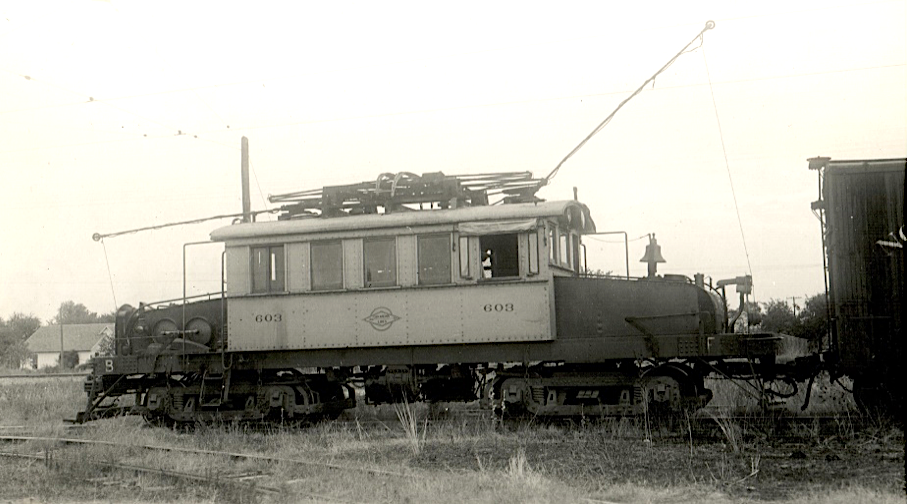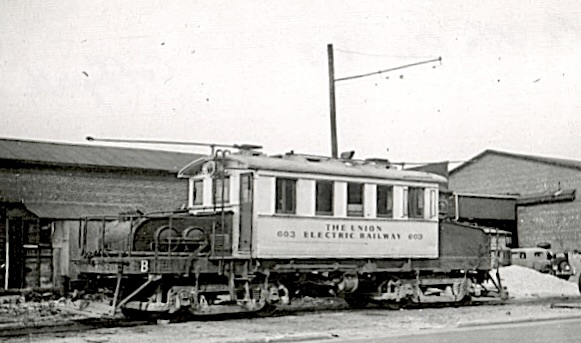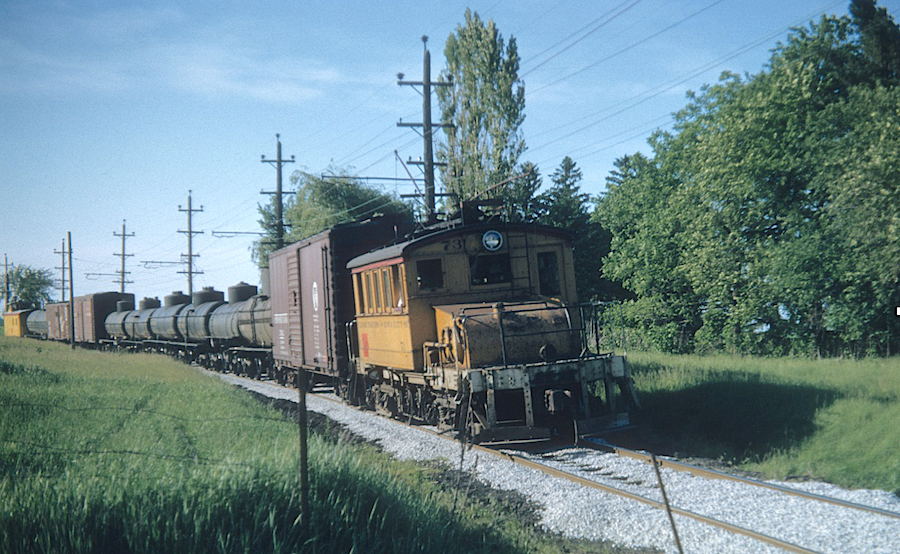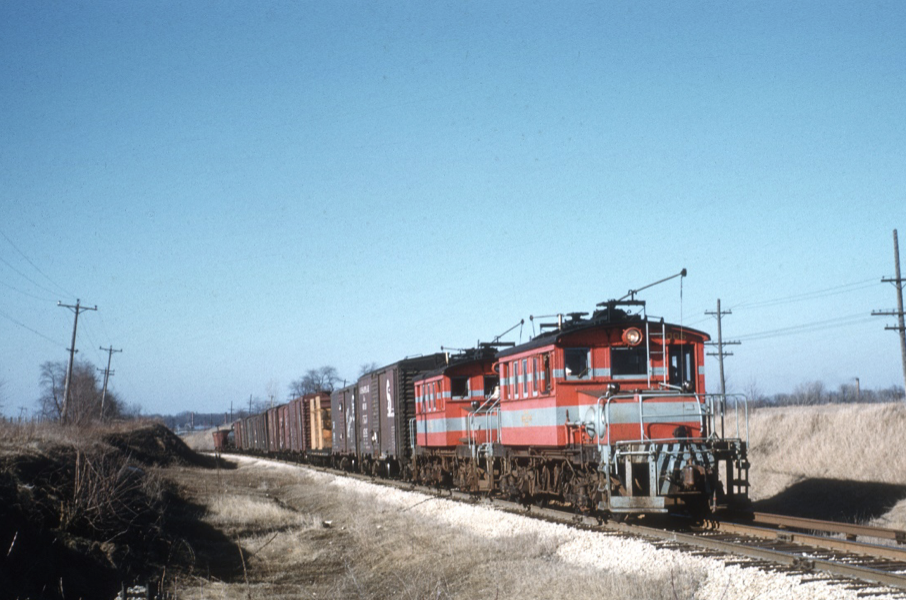Midwest "Ramblin" Man
|
||
|---|---|---|
| Text and captions by Art Peterson. All photos from the Krambles-Peterson Archives | ||
|
In 1929, Oklahoma Railway (ORy) was in the process of electrifying both the Oklahoma Belt
Railroad and the Oklahoma City Junction Railway to expand its freight haulage and interchange
business. That same year, the companys shops completed two new heavy-haul steeplecabs,
which were assigned numbers 603 and 604. As built by ORy, the locomotives were equipped with
four WH 562D5 motors, HLF control and rode on Standard C80P trucks. In the course of a 30-year
existence, these two locomotives would manage to call four different properties home.
ORy 603 is shown working the wye in Norman (18 miles from Oklahoma City) on September 13, 1938 in a Bill Janssen photo. Though passenger service would continue to Norman until 1947, ORy had exited the freight business on August 16, 1944, having sold its freight-only trackage and rights over other lines to the Rock Island and the Santa Fe. As built for ORy, these locomotives were equipped with both pans and trolley poles. (Below photo)
 After they were no longer needed on the ORy, the pair moved to the Union Electric Railway of Coffeyville, KS (in southeast Kansas, just north of the border with Oklahoma). This 77-mileoperation was remarkable for having remained intact up till the end of interurban service on April 4, 1948, and this despite having failed to cover its operating costs in 24 of the 26 years up to that 1948 abandonment. |
||
(Right photo) Shorn of its pantograph, UER 603, is shown at the Coffeyville Shops in this
undated view. The locomotives time on UER was brief, as all operations (both freight and
passenger) came to an end on April 4, 1948. At some point during their UER career, the pair
were repainted in aluminum paint with black hoods. Photos of the 604 show it wearing this
livery by 1946. |
 > > |
|
The next stop for the pair was the Cedar Rapids and Iowa City (CRANDIC), based out of Cedar
Rapids, IA. During 1948, they headed north to the CRANDIC shops for reconditioining, prior
to supplementing CRANDICs existing fleet of steeplecabs. The 27-mile line between its
namesake towns went into operation on August 13, 1904. |
||
 |
(Left photo) George Krambles caught the former ORy (and UER) 604 swinging around a curve in
North Liberty, IA on May 30, 1952. The CRANDIC roster listed the locomotive weight as 146,000
pounds. Not long before this photo was takn, CRANDIC was grossing $1 million per year on its
freight service. Passenger service would end exactly one year later on May 30, 1953. Electrified
freight service hung on until October 15, 1953, when it transitioned to diesel-haulage. | |
CRANDIC 72 and 73 were sold to the Chicago Aurora & Elgin (CA&E) in 1955. There they
supplemented a pair of 44-ton GE steeplecabs and two 53-ton Baldwin-WH units. CA&E listed
the weight of the ex-CRANDIC units as being 144,500 pounds.
Owing to frame issues with the 1923-24 Baldwin-WH locomotives, the final chapter of CA&E freight service would end up being written by the roads oldest locomotives (GE, 1920). The last CA&E freight ran on June 9, 1959. Locomotives 4005 and 4006 were scrapped along with the other four CA&E locomotives and many other cars at the roads Wheaton, IL shops and yard complex. |
||
(Right photo) Johnnie Williams chased the CA&E freight making its return trip on the Elgin
Branch on a superb day in late 1958. Locomotive 4006 (former 73/604) leads the train as it
climbs out of the Fox River Valley. This 13-car load was close the maximum CA&E would handle
with the two locomotives. As it happened, freight car loadings on the CA&E actually picked
up in late 1957 and early 1958, though CA&E was still unable to cover its costs to the tune
of about $40,000 a month. A further blow came in late 1958, when the 4005 and 4006 were
condemned for bad flanges. |
 |
Acknowledgements: |
| New: 1 October 2023 | ||